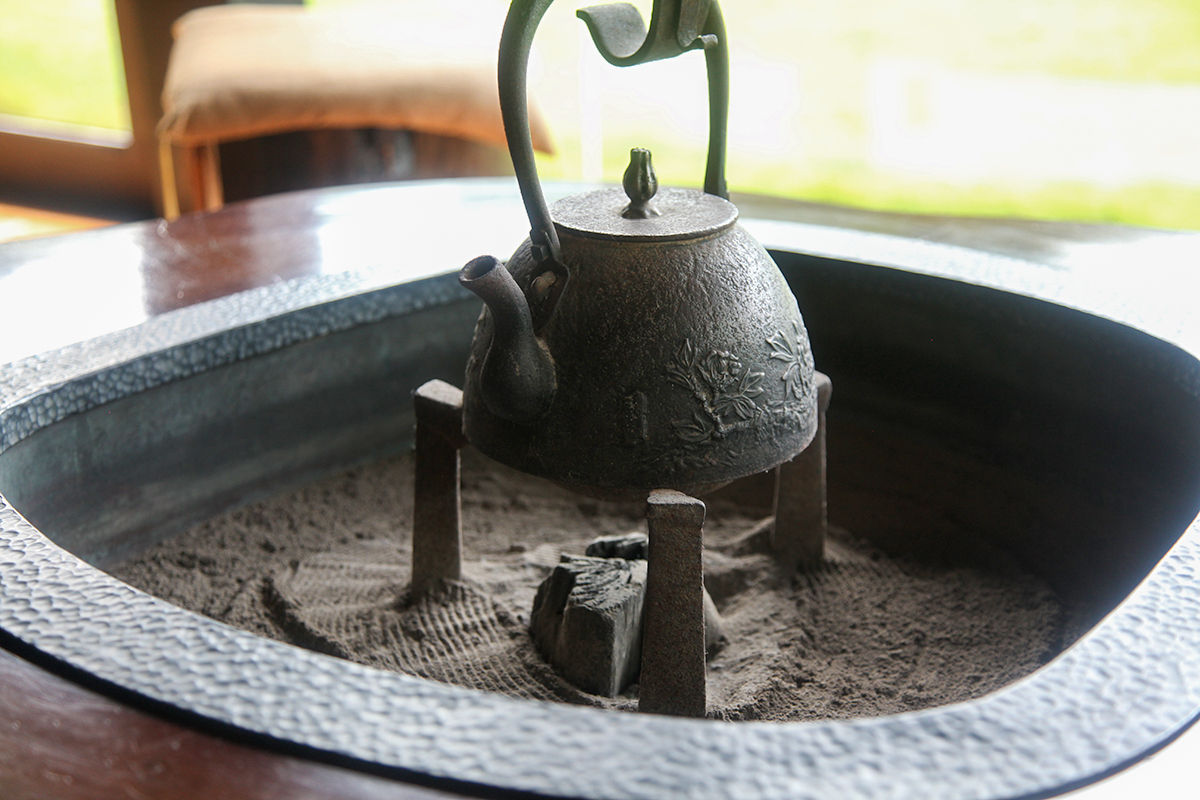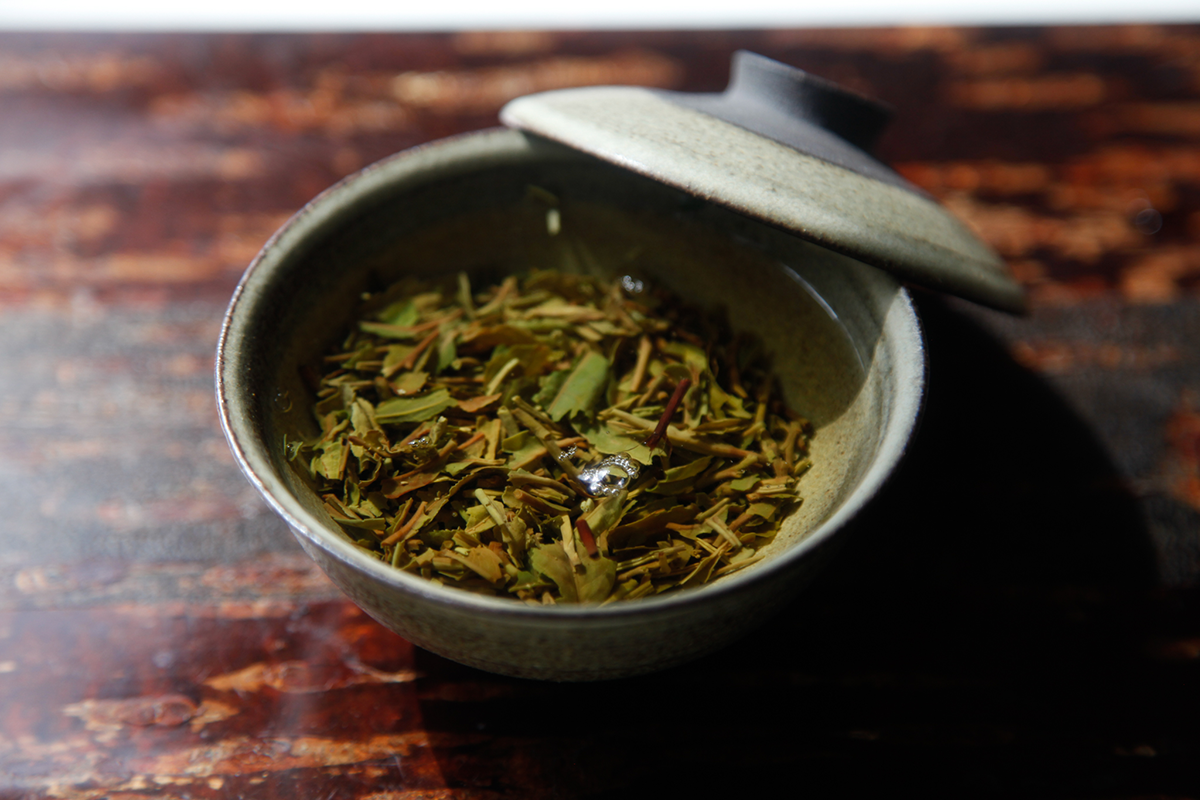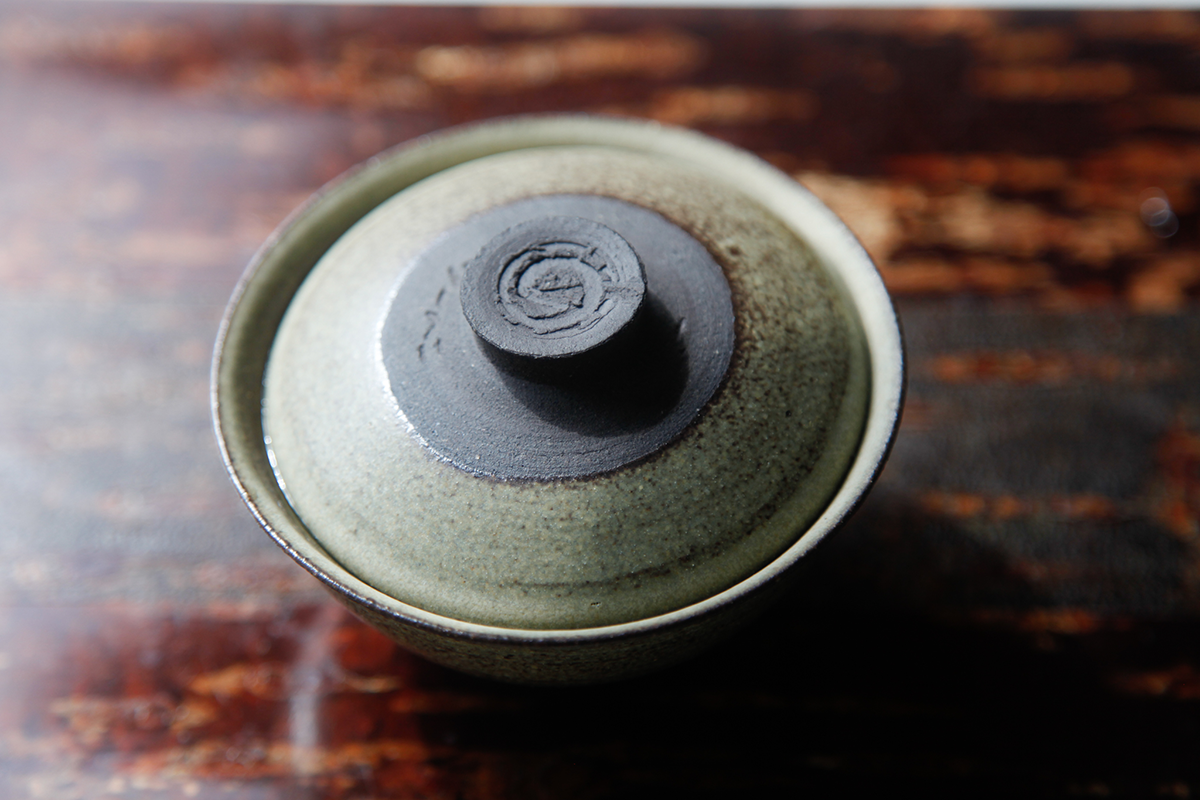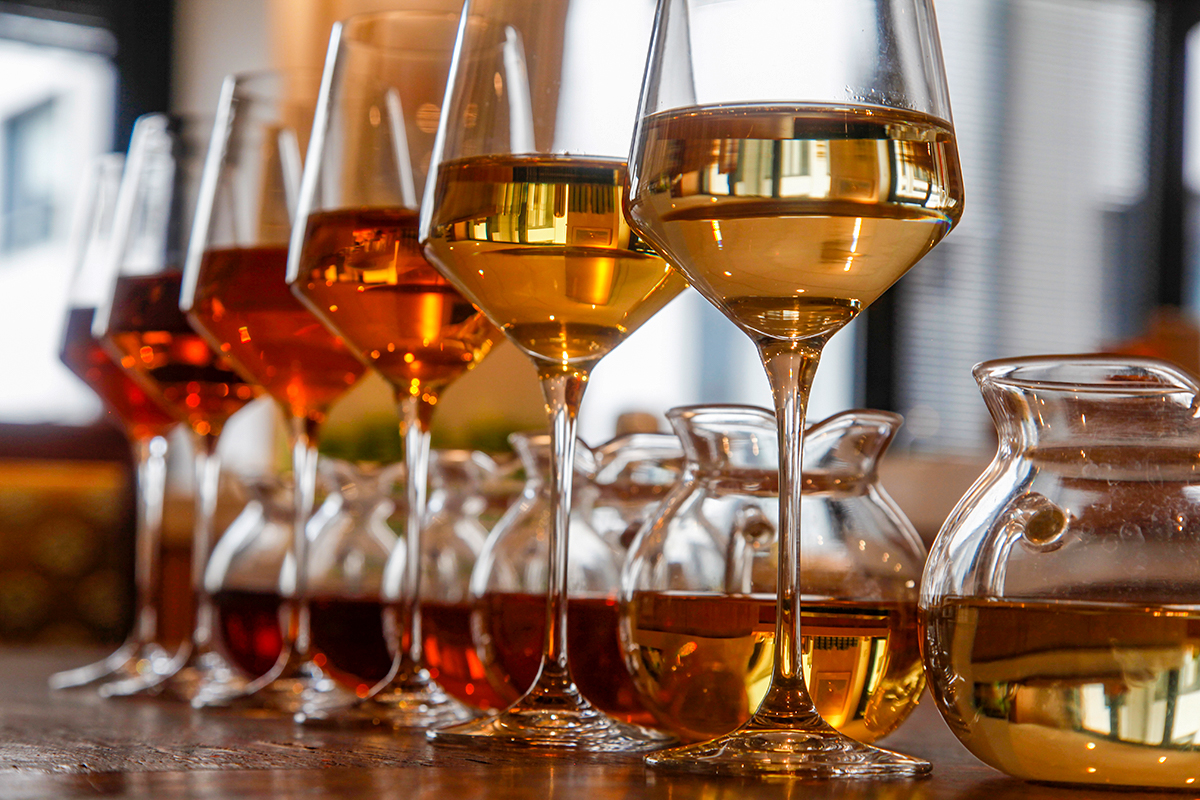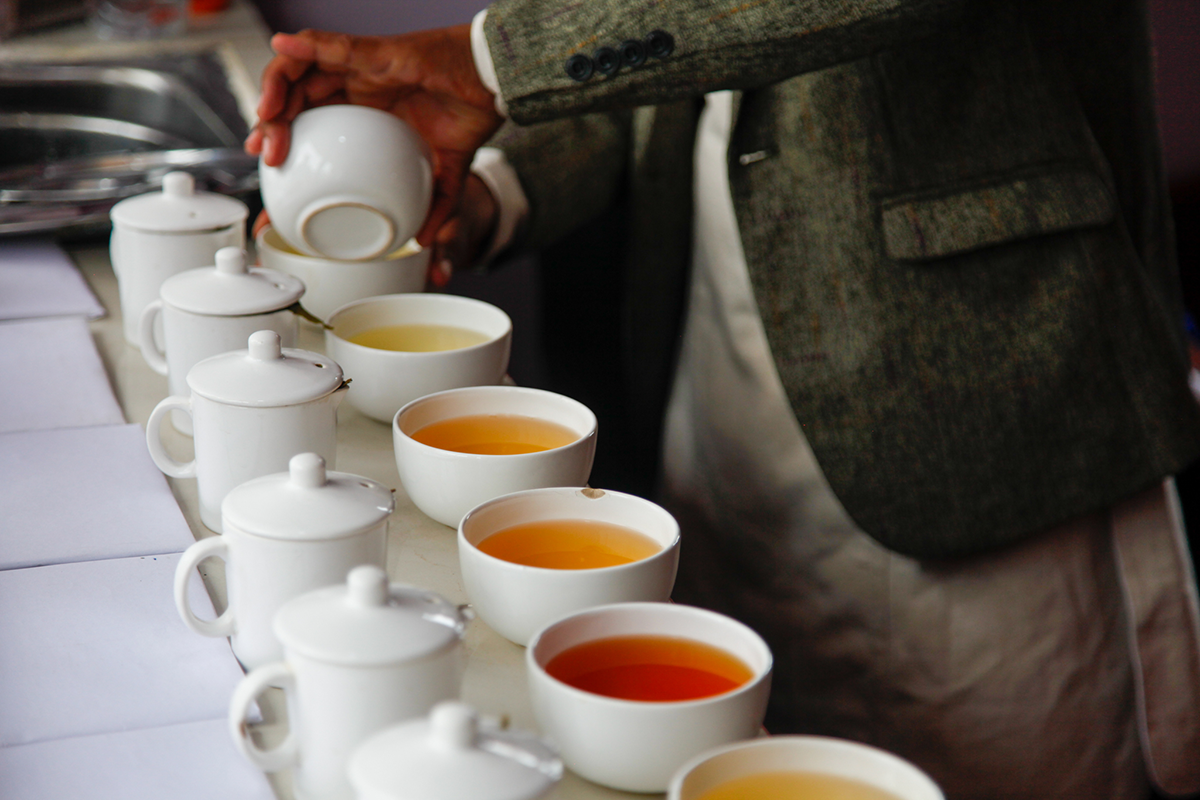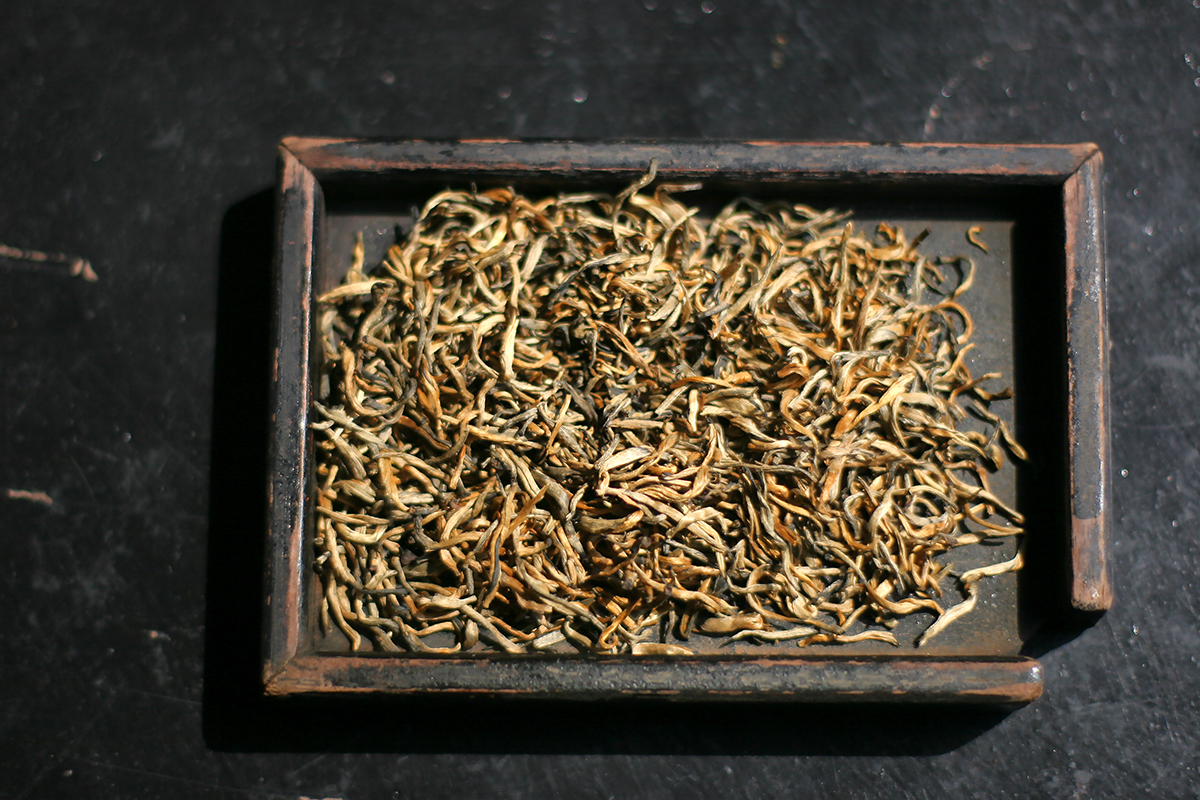When I visit a tea producer, I try to take a few samples for them to try. Most farmers don’t travel. They spend the whole year on their plantation and have very few opportunities to taste teas other than their own. I think it’s important to give them a chance to try other teas, not in order to imitate them, but to inspire them and connect them with other tea producers who are proud of what they make. These tea tastings, like here in Satemwa in South Africa, are very special to me.
Hojicha, a wonderful roasted tea
The most famous Japanese roasted tea, Hojicha (or Houjicha) is made from Bancha tea harvested in the autumn. After being processed using the traditional Japanese green tea method (steaming, shaping, drying), the leaves are roasted at 150°C for five minutes and then at 300°C for another five minutes. Nowadays, Hojicha is consumed more in those parts of the country where tea doesn’t grow, i.e. north of Tokyo, mainly on the island of Hokkaido. For food lovers, serve Hojicha lukewarm or at room temperature and pair its woody, animal notes with a Pont-l’Evêque, Livarot or any other soft cheese with a washed or bloomy rind.
From kettle to teapot
In Japan, the cast-iron kettle is one of the traditional objects used in the tea ceremony. This is the same kettle you’ll see in Japanese inns, over a hearth of embers. In winter, people sit by the hearth to warm their hands. As well as providing heat, the kettle holds the water used to make tea. The water is drawn from the kettle with a bamboo ladle and poured directly into the tea bowl, if it’s a powdered tea.
In a way, it was the French who invented the cast-iron teapot, back in the 1980s. Attracted by the graceful design of this vessel, they persuaded foundries in northern Japan to make much smaller versions, sometimes glazed, with a filter inside: thus the cast-iron teapot was born. For a long time, France was the main export market for this beautiful object that lasts a lifetime.
A very classy tea
In Britain, tea is a ritual, or rather, rituals. There is breakfast tea to start the day, and later on, the much-loved tradition of afternoon tea. The latter is more of a meal than a beverage: the tea itself is important, but even more so is the setting, the quality of the china, and the accompanying cucumber sandwiches, cakes and scones with jam and whipped cream. The Duchess of Bedford started this tradition at the beginning of the nineteenth century. In those days, people ate their lunch early and their evening meal late, and the Duchess grew hungry later in the day. She began to ask for food to be served with her cup of tea in the afternoon. This soon turned into a sophisticated social occasion, a tradition that lives on across the country. Afternoon tea at one of London’s prestigious addresses will satisfy even the biggest appetites in the most refined surroundings complemented by discreet service. It is a social ritual of etiquette. A very classy tea indeed.
Live free!
The gaiwan works as follows: after placing a large quantity of leaves in it, equivalent to around a third of its volume, the water is poured in. The first – short – infusion is poured into a “fairness cup” or directly into the drinking cups, and is followed by a second and then a third infusion.
The leaves are completely free during this series of brief infusions. Watch them unfurl. They are at home in water. Have you ever looked at tea leaves as they infuse? Have you ever seen them so relaxed? The gaiwan is not just a vessel for brewing tea, it’s a spectacle in itself. The object is beautiful, and the leaves inside are beautiful as they infuse. When we gently lift the lid, we can admire their colour, their shape, the way the water brings them back to life. And, of course, we can appreciate the aromas that emanate from them, which we can smell by lifting the inside of the lid to our nose.
The simplicity of the gaiwan
Apart from the tasting set, which is sometimes used by professionals, there are different ways of brewing tea. In China there is the zhong or gaiwan; in Japan the shiboridashi or kyusu. In the West, the most commonly used vessel is the teapot. But why not explore lesser known objects? Today, I would like to talk to you about the gaiwan. It’s a very simple thing, consisting of a kind of bowl with a lid. Let’s take a look at it from the outside while the tea is brewing inside. The beauty of the gaiwan lies in its radical simplicity. What is the principle of brewing tea? It involves bringing the tea leaves into contact with water. As the leaves unfurl, they release their aromas and other elements. I can’t think of a better place to brew tea leaves than in this remarkable object. I could show you the inside of the gaiwan right now, but I’d rather wait. What I enjoy most while my tea is brewing is appreciating the vessel in which it’s brewing: its colour, the way the changing light plays on its surface, its material. I observe the roughness of the clay and my contemplation transports me to distant landscapes. This gaiwan was made in the Périgord region of France by a talented ceramist, Manon Clouzeau. Let’s have another look at our tea brewing under this delicate lid, which is so easy to hold. I’ll leave you to look at it and will see you soon. Next week, I’ll take the lid off.
Des accords salés
La chaîne de télé M6 est venue me voir cette semaine pour m’interroger à propos d’associations de thé et de mets. Et pas n’importe quelles associations ! Uniquement celles qui ont à voir avec du salé. En effet, marier le thé avec le sucré, y compris pour les néophytes, cela coule de source et ça s‘appelle par exemple le « tea time ». En revanche, avec le salé, c’est différent, disons plus osé, alors ma première recommandation est celle-ci, pour celles et ceux qui souhaitent se lancer dans de tels accords, il est souhaitable de privilégier une infusion à température ambiante. La raison en est que si charcuterie et thé ont des choses à se dire, si fromage et thé aussi à condition de bien choisir son cru, il n’est pas conseillé ici de confronter le chaud au froid. Pour votre infusion, voici comment procéder : vous prenez le thé de votre choix, vous mettez dans une carafe la quantité habituelle à savoir deux grammes par tasse, vous versez de l’eau filtrée et vous attendez une heure. De gauche à droite, Pu Erh Impérial (pour un Comté 36 mois), Bancha Hojicha (pour un brie), Shiraore Kuki Hojicha (pour un pont-l’évêque), Butterfly of Taiwan (pour un ossau-iraty), Dharamsala smoked (pour un fromage fumé, une charcuterie), Chine Long Jing (pour un chèvre frais). Bon appétit !
Tea and hospitality
Taking a tea break can be beautifully simple. Here in the Egyptian desert, during the mint harvest, the workers gather a few sticks of fig wood and heat the water in a basic kettle that also serves as a teapot. A few minutes later, everyone savours the pleasure of being together.
The Darjeeling marathon
Every year, we tea sommeliers are subjected to a marathon: the Darjeeling spring harvests. Samples of new-season teas from the region arrive in bags of ten, twenty or thirty. You must taste them within half a day if you want to be in with a chance of getting hold of the tea. The sooner you buy, the more expensive it is, but the longer you wait, the more you run the risk of missing out on the teas you want. This process, which only takes place for Darjeeling because sales go to the highest bidder and batches don’t exceed a few dozen kilos, lasts about six weeks. By the end, the entire spring production has been sold and the tea bushes, distressed by three consecutive harvests, take a rest before resuming their growth. An observation at this point: every year, these teas are worth more and more. Yet all the gardens in Darjeeling claim to be losing money due to rising production costs, and the increases don’t appear to benefit the pickers. The Mckinsey audits, which were so maligned on the eve of the election, would be invaluable in shedding light on this mystery.
Safety first
Just a few days ago, Léo and I had the pleasure of tasting a sensational tea sourced from southwest China. In fact, the variety was one of the famous ‘Yunnan buds’ that is going down a treat with tea lovers all over.
I thought it would be interesting to share with you the different stages of selecting a batch of tea.
Once the quantity we want has been decided, an order is placed. Because this is a small batch tea, it will be shipped by air. No sooner will the wheels touch the ground than a sample will be whizzed over to an independent lab for testing. Although not legally required to, Palais des Thés has made it policy to test any tea that has not been awarded French agriculture biologique certification, proof that is has been organically farmed. We are looking for over a hundred different molecules to confirm that the batch complies with European standards, known for being the most stringent in the world. Only if the tea passes muster will the leaves be distributed to our boutiques. It takes on average 4-6 weeks from when the tea is sampled to it being available to buy in store. A relatively long timeframe that Palais des Thés stands by because we understand the importance of guaranteeing food safety for the good of our customers’ health.

